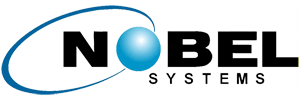The global demand for geospatial data has catapulted to unprecedented heights, facilitated by an increase in geo-enabled devices and technological capabilities. The global GIS (Geographic Information Systems) market is expected to grow exponentially over the next five years, where it will continue to impact government, utility management, transportation, and many other sectors.
There is widespread belief GIS will transcend technology in convergence with Big Data, AI, IoT (Internet of Things), the Cloud, and the commercial space.
Access to geospatial data sources is likely to increase, as we collectively harness the vast quantity of data at our fingertips.
The GIS industry might be forever changing, but what remains constant is a comprehensive data-focused approach to analysis.
As innovations arise, there will be more transparency in an ever-evolving GIS industry with multiple prospects.
With the increasing presence of satellites, UAVs, and GPS-enabled smartphones, GIS is undoubtedly on an upward projection, especially in industries like utility management.

Looking forward to the next five to ten years in utility management, we asked Nobel Systems President Michael Samuel about his thoughts on where GIS/IoT is headed in the utility sector and what future innovations Nobel has in store.
What are the newest developments in utility management using GIS/IoT that we will see in the next five to ten years?
Over the coming decade, a more digitally integrated utility will be possible with the fusion of utility management tools and databases, some old and new, some on-premise and some in the Cloud.
GIS, IoT, SCADA, CIS, CMMS, LIMS, and Network Models will integrate with machine learning/artificial intelligence (AI) that can inform and automatically improve system operation … reduce non-revenue water, enhance the quality of water, reduce energy costs, prevent contaminant events, mitigate emergencies, and identify high-value asset R&R priorities.
With increasing water shortages facing communities around the world, what ways can GIS/IoT help water management in the future?
GIS and IoT provide water professionals and customers with powerful near real-time insights into spatial and temporal events in water’s life cycle – weather, supply, treatment, storage, conveyance, customers usage, quality, and the safe collection, treatment, and disposal of wastewater back into the environment.
The democratization of data and information systems is occurring on a global scale with the widespread use of lower cost wireless communication, cloud servers, and IoT/GIS integrated website applications which will help utilities to improve long-range planning, engineering, operation, and maintenance of water and wastewater infrastructure and environmental assets.
How can utilities deal with security issues that are now facing them with asset management entering the digital/online space?
It is essential to work with a professional consultant with expertise in IT/SCADA security, IoT, and GIS cloud solutions when planning the future of your “digital utility.
The following “food for thought” is provided: Utilities should consider the consequence of failure versus operational savings when considering the use of cloud technologies.
For instance, a traditional SCADA system that is not connected to the Internet or corporate LAN, while more expensive than IoT solutions, is better suited for remote control of a water pumping station that serves thousands of customers versus a cloud IoT solution that is theoretically more vulnerable to cyber-attack.
On the other hand, a pressure monitoring-only IoT device on a hydrant does not pose a significant risk or consequence of failure if this system is hacked and temporarily out of service.
However, there are techniques for collecting and pushing important real-time operational data from this pump station or any point to a cloud application that has no control of critical systems.
Where do you see you Nobel in five to ten years? What exciting new technologies/capabilities are you planning for the future?
Nobel is a leader in cloud-based utility management solutions that integrates GIS, work order management, customer portals, and IoT, so operators, engineers, and managers can more efficiently manage their water and sewer infrastructure.
We will continue to develop our IoT capabilities to include pressure, flow, water quality, and active leakage management.
One of the most exciting advancements will be the integration of hydraulic and water quality network simulation modeling within the GeoViewer platform. This new modeling system will allow operators to perform simulations from the field or office.
We have also completed the development of an advanced GIS-based billing system with service order generation. We feel this is a first of its kind since generally the billing and GIS are standalone. This new GIS-based billing network is a truly integrated system.
What do you see as the most exciting advancements in the overall technology field?
We anticipate great advancements in the field of machine learning and AI over the coming decade. We believe these will become important in the area of IoT/SCADA data pattern recognition and asset vulnerability.
However, we think that real-time IoT or SCADA integrated network hydraulic models are the first steps and will provide the critical link to future machine learning/AI software.
To learn more about Nobel Systems and its products and services visit Nobel-Systems.com
